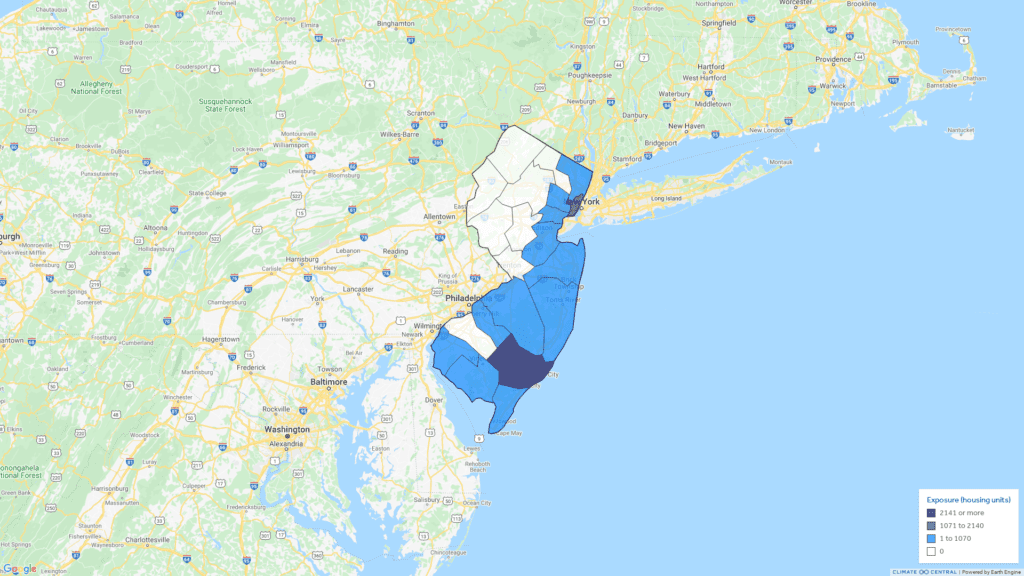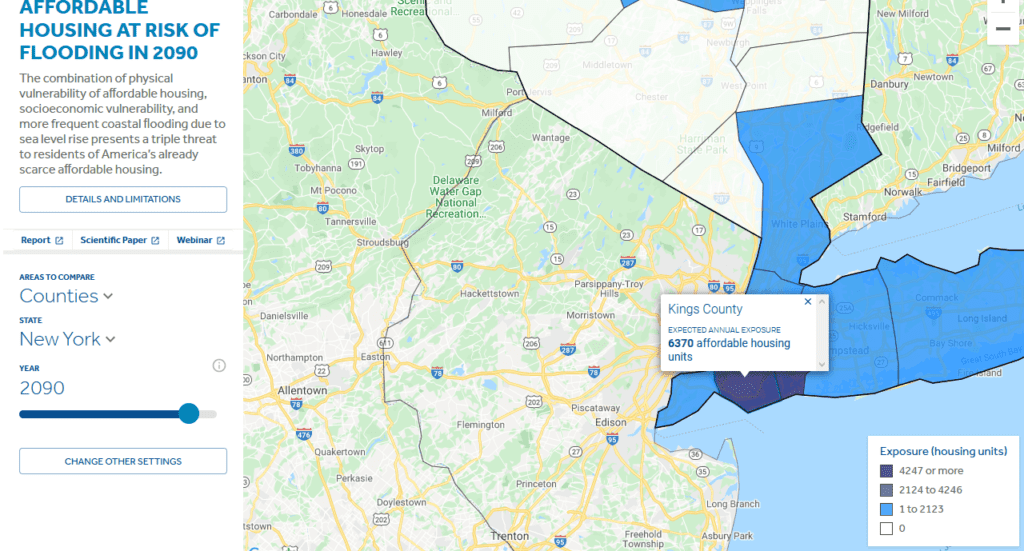As the world gets warmer, the sea level rises — it’s one of the many consequences of climate change. But sea level rise isn’t always straightforward: tides and storms also threaten homes along the coast, in addition to the direct sea level rise.
But not everyone is exposed in the same way, according to a new study. As it is so often the case, it’s the low-income Americans that will be most affected.

Climate Central, a nonprofit that analyzes and promotes climate science, showed that the number of affordable housing in the US exposed to flooding would triple over the next 30 years if emissions aren’t drastically reduced. This would mean moving from the current 7,668 units across the US expected to flood in a typical year to 24,519 units by 2050.
“The combination of physical vulnerability of affordable housing, socioeconomic vulnerability, and more frequent flooding due to sea-level rise presents a triple threat within the next 30 years to residents and owners of the country’s already scarce affordable housing,” the authors of the study wrote.
The frequency of coastal floods has already risen sharply in recent decades due to global warming, and this trend will not slow down as long as emissions don’t also slow down. Tidal flooding that now occurs once a year may occur on a weekly basis in some coastal communities, according to previous estimations.
This is particularly concerning for affordable housing and low-income households. The US has an estimated 35 affordable rental units available for every 100 extremely low-income renters. These homes are even more vulnerable to flooding, as they are older and not equipped with resilience features.
Researchers at Climate Central wanted to quantify the current and future coastal flood risk to the affordable housing inventory so stakeholders could understand the overall exposure of this already scarce resource. They focused on the year 2050 as an objective to highlight the threats for residents and find plans for resilience.
They first gathered data from the National Housing Preservation Database’s dataset to find affordable housing in the US and map it. They used this information combined with climate models to create an interactive map, through which people can see how their hometown might be affected due to sea-level rise. The timeline of the map can be switched from 2030 to 2100.

New Jersey has the highest percentage of its affordable housing stock currently exposed to sea-level rise, followed by New York and Massachusetts. Fewer units are at risk in California, but these units face a high risk of repetitive flooding, as in Maryland, Alabama, and Texas.
But the risk becomes much more significant by 2050 if emissions keep growing. New Jersey could see nearly 7,000 units exposed, a four-fold increase; and New York and Massachusetts would continue to rank among the top three states for the absolute and relative number of units exposed, the study showed.
The researchers also ranked the top 20 cities in terms of annual numbers of units exposed by 2050. Cities in the Northeast and California are the most vulnerable, with New York City remaining the most exposed, with over 4,000 units at risk per year by 2050. Five cities in New Jersey also ranked in the top 20.
“I hope this can guide policy that will help the people who are most vulnerable to coastal flooding, which is low-income people in affordable housing. We feel like we’ve really pinpointed that problem with this study,” said in a statement Benjamin Strauss, a co-author of the study who is also chief at Climate Central.
Having a better understanding of the exposure of affordable housing to flood-risk events is of vital importance to support strategic resilience planning, the researchers argued. They suggested implementing flood-threat reduction measures and land-regulatory policies to protect the lives of those who live there.
The good news is that 75% of the affordable housing stock vulnerable to future floods is concentrated in just 20 cities, which means that targeted impacts could make a big difference.
The findings follow previous studies that have warned over the impact of sea-level rise in the US. Earlier this year, a study from the University of Southern California found 13 million people would be displaced across the country by 2100, placing extreme strain on several cities throughout the country.
The study was published in the journal Environmental Research Letters.


